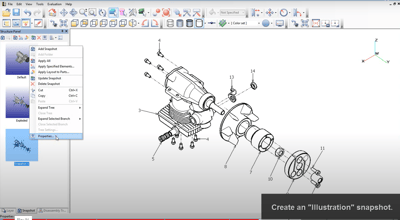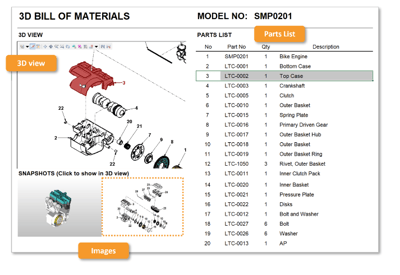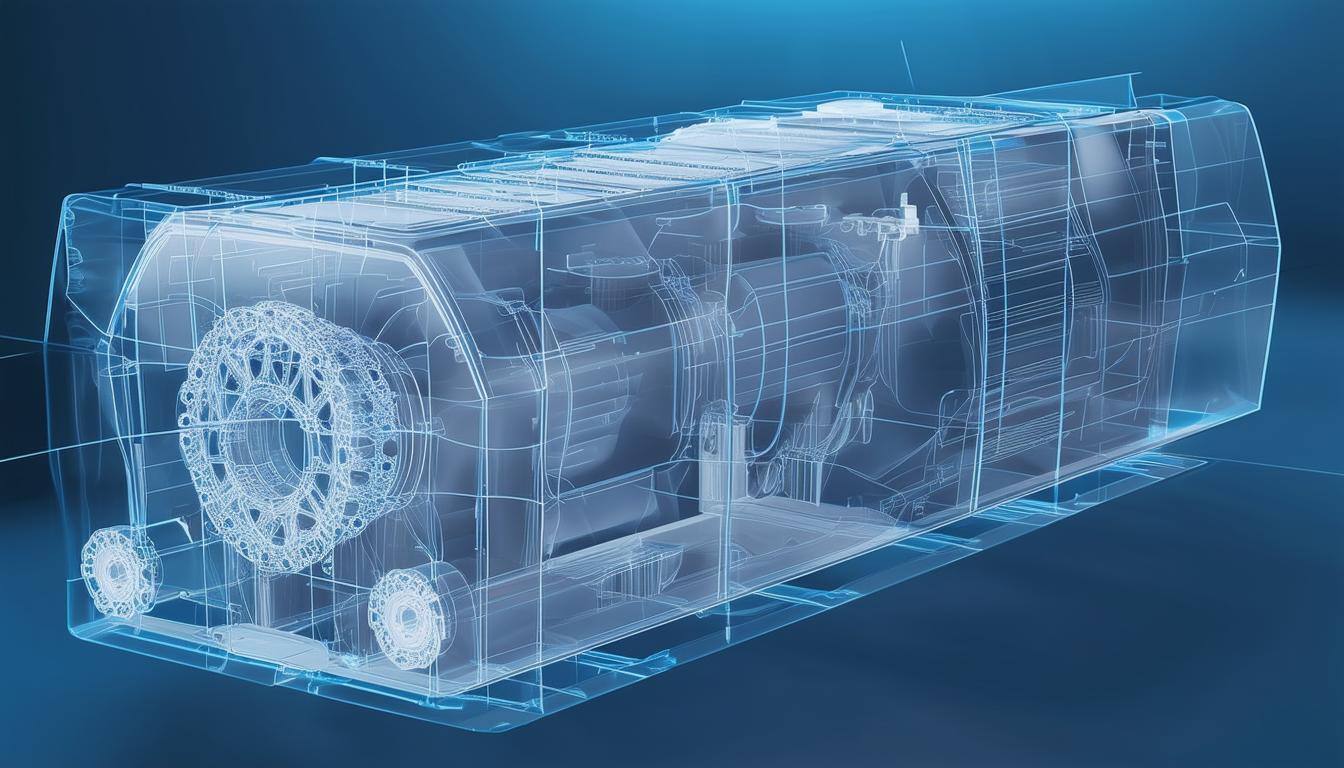3D Digitial Twin: 6 Use Cases for the Manufacturing Company
XVL, from Lattice Technology, takes off from where your 3D CAD systems stop.
Challenges of Using 3D CAD Downstream from Design
Everyone knows 3D CAD files are difficult to deal with:
- Files can be extremely large, often in the gigabyte range
- A single product may consist of tens, hundreds, or even thousands of 3D CAD files
- Multiple CAD formats may be used for a single product such as SOLIDWORKS, CREO, Catia, NX, or JT
- CAD licenses are expensive and require advanced expertise to use
- Viewers struggle with handling multiple formats and numerous files and don't include all of the metadata
XVL addresses all these challenges and more. It was specifically designed to make 3D CAD files from the design department accessible and useful across the entire organization.
3D Digital Twin aka Virtual Product Model
With XVL, all native 3D CAD models for a product can be combined into a single file—without resorting to neutral, simplified formats. The file is compressed to roughly 1/100th of the original CAD file size while retaining CAD-level accuracy. This creates a high-performance, comprehensive file for your entire product, containing all the data from your native CAD system. We call this the Virtual Product Model.
General Reasons to Use XVL
- Unified Product Model: Combine all native 3D CAD models for a product into a single, highly compressed file, retaining CAD-level accuracy without using simplified formats. This Virtual Product Model consolidates data from multiple CAD sources into one accessible file.
- Efficient Data Management: Compress CAD files to about 1/100th of their original size, significantly reducing storage requirements while retaining the quality and accuracy needed for downstream processes. This makes sharing and collaborating on product data across teams much more efficient.
- Cross-Department Utility: XVL extends the value of your 3D CAD files beyond the design department, making them accessible to the entire organization. This allows non-CAD users to interact with accurate 3D data, supporting roles in manufacturing, quality control, and more.
- Seamless Format Handling: XVL integrates 3D CAD models from different native formats—such as SOLIDWORKS, CREO, Catia, NX, or JT—into a single file. There is no need to worry about the challenges of different formats; XVL provides a unified solution for all.
- High Performance: XVL's efficient compression and single-file approach make even large, complex product models manageable. Teams can interact with the full product model without the performance issues typical of large CAD files.
- Broader Use Cases: Unlike standard CAD viewers, which are limited in functionality, XVL allows users to leverage 3D CAD models for a range of applications across the organization. This includes areas like assembly planning, simulation, and visualization—providing far more utility than a simple viewer.
6 Use Cases of the 3D Digital Twin for Manufacturing Companies
We offer 6 solutions.
- Design Review
.png?width=400&height=241&name=image%20(12).png)
Easily conduct design reviews for your entire product. Automatically detect design issues and invite others for external perspectives. Identify and resolve issues early to enhance quality, reduce costs, and accelerate time-to-market.
- Common Challenges
- Design review solutions often cannot handle large models due to software and hardware limitations
- Design reviews usually require expensive software and high-end hardware
- Design review solutions can miss issues, which become more expensive to fix later
- Common Challenges
- Assembly Process Validation
.png?width=400&height=224&name=image%20(13).png)
Validate the assembly process virtually as soon as preliminary designs are released—no need to wait for prototypes. Identify and address issues early to enhance quality, reduce costs, and speed up time-to-market.
- Common Challenges
- Assembly planning and validation often start after the design is complete, delaying the discovery of assembly issues
- Assembly validation often requires physical prototypes that are slow and expensive to produce
- Due to hardware and software limitations, digital assembly validation solutions often cannot handle large models
- Design changes usually require slow and costly revalidation of previous results
- Common Challenges
- Work Instructions
.png?width=400&height=151&name=image%20(14).png)
Leverage your 3D CAD models to create precise work instructions. Easily generate 2D illustrations and 3D animations to make instructions simple to follow. Automatically update instructions when the design changes.
- Common Challenges
- Authoring work instructions cannot typically commence until a physical prototype is developed
- Authoring work instructions with photos and text can be cumbersome and time-consuming
- Updating work instructions when the design changes can be expensive
- Common Challenges
- Technical Illustrations

Quickly and easily create technical illustrations from your 3D design data. Ensure consistent illustration quality across the department and automatically update illustrations when design changes occur.
- Common Challenges
- Creating technical illustrations by hand traditionally requires physical mockups or photographs for reference
- It is difficult to maintain consistent quality when creating manual illustrations
- When the model changes, you must recreate the illustration from scratch
- Common Challenges
- Technical Documentation

Quickly and easily create technical illustrations from your 3D design data. Ensure consistent illustration quality across the department and automatically update illustrations when design changes occur.
-
- Common Challenges
- Technical documentation is often difficult and time-consuming to produce.
- Traditional technical documents are static and lack interactivity.
- Manually keeping documentation up to date is difficult and error-prone.
- Common Challenges
- 6. Electronic Spare Parts Catalogs and Service Portals
- Extend the use of your 3D models into service and support.
- Spare Parts Catalogs
- Create an interactive graphical-based parts catalog from the Virtual Product Model.
- Service Portals
- Provide all of your service procedures as interactive work instructions.
- Spare Parts Catalogs
Want to Learn More?
Send us your question by following the link below.

